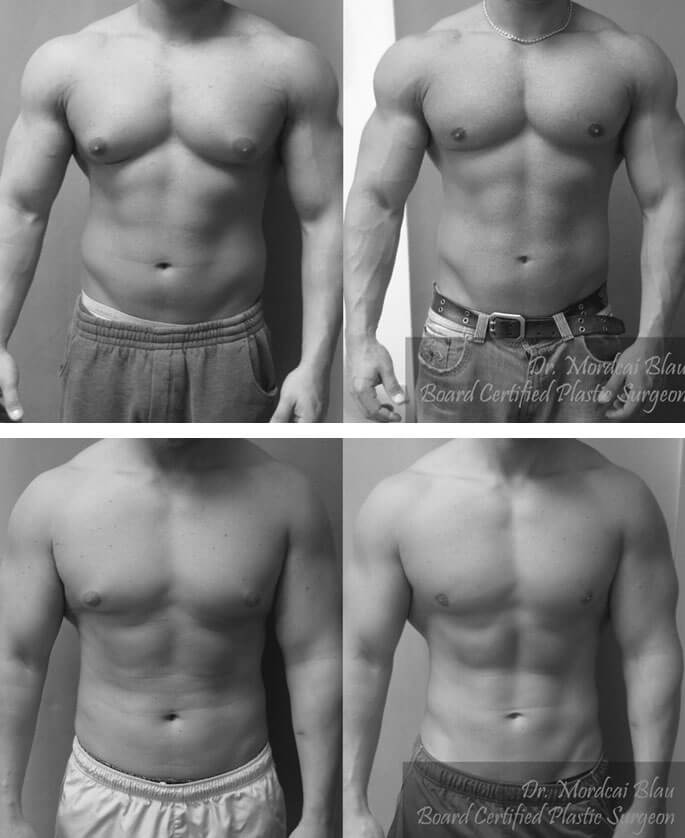THE PROCEDURE: “The Natural Blend Technique” Pioneered by Dr. Mordcai Blau
Over the course of performing thousands of gynecomastia surgeries, I’ve developed my own technique, which I call the Natural Blend Technique. The most important aspect of my method is to remove breast and fat tissue in specific locations to make sure the patient’s chest is well-balanced in proportion to the rest of his body.
During surgery, I typically start by making an inch-long incision along the underside of the patient’s areola. That’s a good site for the incision because it allows enough room to completely remove the gland and perform liposuction if necessary, while the incision’s size and location lend themselves to minimal scarring, especially since I make the cut where the skin tone changes from chest to areola. The incision is usually inconspicuous because of its location, and because the actual size of the incision may shrink over time after the surgery. In more serious cases of gynecomastia, I may need to make a slightly larger incision in order to remove all the glandular tissue, but in recovery, I find that the scar can still go unnoticed most of the time, as long as it’s placed correctly. Some physicians cut into their patients’ armpits or along the crease of the breast, but I’ve found that those are more visible and less effective locations.
Once I’ve made the incision, I remove excess gland, fat, and fibrous tissue. If I need to perform liposuction, I can insert the liposuction tool—called a cannula—into the same incision. I use it to maneuver between the layers under the skin, breaking up excess fat and suctioning it out of the chest. With IV sedation, the patient doesn’t remember or feel a thing.
The key is to make the chest appear natural and smooth. If, for example, I removed the glandular tissue from an average patient without removing surrounding fat, his chest could be concave where I took out the gland. That would be akin to taking a bowl of ice cream and scooping a spoonful from the top—there’s going to be a crater unless you smooth out the remainder. In a bodybuilder, on the other hand, I generally don’t need to remove any fat because he has almost none in the first place. On some rare occasions, if I find that removing the glandular tissue and fat doesn’t produce the proportional structure I’d hoped for, I use a “fat flap” to blend the tissue and create a smooth contour. Often, this means detaching a small region of fat on the chest almost completely but leaving one part of the flap attached at the base, kind of like a peninsula. I can then maneuver the “peninsula” of fat in certain ways to smooth over any contours or unevenness.
After I’ve done this initial work, I always pause to examine the chest as a whole. After all, of what help is it to the patient if each breast looks good on its own, but the two don’t appear good together? No one is totally symmetrical, of course, but we want to achieve the best aesthetic result possible. As always, the patient has to be realistic in his expectations.
After the surgery, I send all breast tissue to a pathology laboratory for testing, which ensures that the tissue was, in fact, glandular and that the patient doesn’t have breast cancer.





